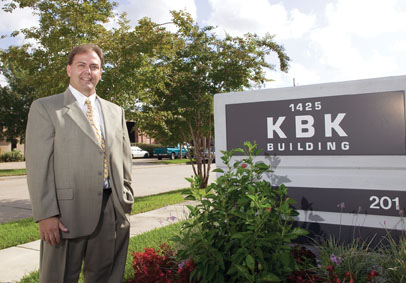GE ERC’s
SELECTIVE STRATEGY
FOR PROGRAM BUSINESS
Insurer builds close and careful ties with MGAs and MGUs
By Phil Zinkewicz
 The concept of the managing general agent (MGA) or managing general underwriter (MGU)—the difference between the two being that the MGA is often involved in the claims process, while the MGU usually is not—has its roots in the old general agency system, which came into being in the early part of the 20th century. The genesis came primarily in New York, where Connecticut-based insurance companies wanted to do business but didn’t want to go to the expense of setting up offices and hiring large staffs. So, they contracted with general agents in New York who produced business for the companies through insurance brokers. Although the general agency concept spread throughout the country and operated very successfully, insurance companies were careful in the initial stages to give these general agents only limited binding authority.
The concept of the managing general agent (MGA) or managing general underwriter (MGU)—the difference between the two being that the MGA is often involved in the claims process, while the MGU usually is not—has its roots in the old general agency system, which came into being in the early part of the 20th century. The genesis came primarily in New York, where Connecticut-based insurance companies wanted to do business but didn’t want to go to the expense of setting up offices and hiring large staffs. So, they contracted with general agents in New York who produced business for the companies through insurance brokers. Although the general agency concept spread throughout the country and operated very successfully, insurance companies were careful in the initial stages to give these general agents only limited binding authority.
Out of these beginnings came today’s managing general agents and managing general underwriters—with one very great difference. By the mid-’70s, insurers, in order to attract new premium dollars for investment purposes while incurring little or no expense, in many instances began giving MGAs and MGUs greater powers—“handing over their underwriting pens” was the expression being used back then. This opened the door for a relatively few unscrupulous, very shady characters to enter the business of insurance, under the guise of managing general agencies and underwriters. By the 1980s, the fraudulent behavior of these miscreants—mostly underworld figures—began coming to light. The scandals involved complicated insurance and reinsurance deals, most of them too complex to unravel, that stretched across the Atlantic to Lloyd’s of London and other major insurance markets. Hundreds of millions of dollars in premiums supposedly collected by these “middlemen” on behalf of companies went unaccounted for.
The primary victims of these unscrupulous actors were insurers, companies that had unknowingly taken on huge liabilities without benefiting from the premium dollars. During that time, Institutional Investor did a profile of one of the alleged ringleaders of the group that caused this mayhem. Referring to all the monies that were siphoned off by quasi-managing general agents and underwriters involved in the scandals, the reporter asked the alleged ringleader being profiled: “What do you say to all the insurance companies that have lost all these millions of dollars?” He answered shamelessly: “They should be careful who they do business with.”
That little piece of advice, however ironic considering the source, has held the insurance industry in good stead since the scandals of the ’80s. Most insurers and legitimate MGAs and MGUs learned from the lesson. Today, managing general agencies and managing general underwriters, for the most part, enjoy a sound and solid reputation in the insurance industry. And, insurance companies that work with these MGAs and MGUs recognize the importance of maintaining a hands-on partnership. The savvy insurers no longer just “hand over the pen,” but make certain that contractual agreements are being adhered to.
GE ERC is one of those insurers. Especially in the area of writing program business, GE ERC Insurance prides itself on working closely with its MGAs and MGUs. Based on lessons learned, “Our current strategy is simple,” says Margaret Zechlin, segment business leader for GE ERC. “It’s built around offering unique solutions for niche customer groups and specialty product programs. Our minimum business requirements include: an existing program with recognized leadership in a market segment; minimum five years program manager experience; and programs with a minimum of $10 million in gross premiums written.”
Lois Massa, sales executive with GE ERC, says that a key component of the company’s relationships with MGAs and MGUs is risk sharing. “It is our belief that superior underwriters deserve the right to share in their superior results.” Commissions are paid on a sliding scale basis, according to Massa. “The more profitable the business, the greater the commission for the MGA or MGU.”
At present, GE ERC works with 17 MGAs and MGUs and underwrites 21 individual programs. Programs underwritten may be single line, single state or national. Niche markets for GE ERC include E&O for financial planners, property and liability for subcontractors, tow trucks and security guards, among others.
“If we believe a particular program represents a profitable market segment, we will look at it,” says Zechlin. “And, we have the expertise to make that determination. Our typical program managers have about seventeen years’ experience in insurance. Most of them are CPCUs and hold multiple designations,” she says.
And, in line with the advice offered by the jaded person interviewed in Institutional Investor, GE ERC is very careful with whom they do business. “We perform our due diligence with great care,” says Zechlin. “We work collaboratively with our MGUs and MGAs. Our people who put together our programs with our producers do not drop out of sight once the program agreement is established. They make visits to our producers’ offices on a regular basis to make sure we’re all still on the same wavelength. Through our analytical tools, we are constantly monitoring and measuring the performance of our programs and sharing that information with our MGUs and MGAs. We also conduct quarterly audits and annual reviews.”
And, that’s not all. “We have also instituted an advisory council,” says Massa. “Our people schedule two-day meetings three times a year to discuss vital issues with our producers—issues such as changing market conditions or claims frequency or anything that may have an effect on a particular program.”
In addition, the programs themselves are the result of a collaborative effort between GE ERC people and their producers. “We don’t just develop products and then launch them,” says Zechlin. “We respond to the needs of our MGUs and MGAs. Often, we take a program suggestion from one of our producers and tweak it somewhat. If there is a specific product we’re not offering and an MGU needs that product, we investigate it to determine whether we can do it profitably.”
Zechlin says that often MGAs and MGUs approach GE ERC because they have lost a carrier due to market shifts. “Some carriers have exited the program business because of financial problems. Some of our competitors are not good at due diligence and, after being in the program business for six months or a year, decide they are unhappy and pull out. This provides opportunities for us because producers and their customers know we’re serious about writing program business. We’re in for the long haul,” says Zechlin.
One of the MGUs that GE ERC partners with is KBK Insurance Group in Harahan, Louisiana. Ken Murray, a principal of the firm, says that KBK is a family-owned business that writes programs for tow truck operators, used auto dealers, body and repair shops and, the agency’s newest program, auto transporters. These are the guys you see on the highways with long trucks on which cars are piled one on top of the other, destined for a dealership. All of KBK’s business is done through GE companies, Westport Insurance Corp. and First Specialty Insurance Corp.
 |
 |
KBK President Ken Murray writes programs for tow truck operators, used auto dealers, body and repair shops, and the agency’s newest program—auto transporters. |
|
“Our relationship with GE ERC came about because of a cold call we made to Westport Insurance Corp.,” says Murray. “We felt that we wanted to move our program business from the carrier we were with to a different, more stable carrier. We called Westport and solidified an arrangement with them in around 90 days, which is something of a record when it comes to establishing a relationship.”
Murray says that KBK became involved in the program business when it put together a program for tow truck operators back in 1987. The program then received the endorsement of the National Tow Truck Association and, in 1990, KBK went nationwide with the program. In 1999, when the hard market hit, many of KBK’s competitors fell by the wayside, allowing KBK to grow. “In 1999, we were a $15 million agency and, last year, we topped $75 million,” says Murray.
“Our first meetings with GE ERC told us immediately that we liked the way the company operates,” Murray continues. “In the first place, they do a very thorough job of due diligence. They did a complete background check on our agency before making a commitment. They examined our financial situation and looked for holes in our underwriting philosophy. GE ERC is very heavy on underwriting philosophy. They don’t believe in writing program business and then just letting the chips fall where they may. In addition to the three yearly visits they make to our agency to discuss issues of importance to our partnership, they do an annual audit. They send down six auditors who perform the audits online and then post the results of the audit on a Web site as they’re going along. We can review the Web site while they are still working and can prepare answers to questions on the spot, so there are no surprises at the end. We find this a very efficient system of auditing.”
GE ERC is using the new technologies to run program business more efficiently and, here again, the company works closely with its agency partners, according to Murray. “The company recently instituted a new system called Jupiter, a new application intended to automate rating, quoting, issuing and policy administration,” Murray says. “Jupiter provides us with a single point of entry for these functions, instead of many separate applications and offers 24/7 access to a wealth of data and reports. We were the first ones on the system. All new computer programs have kinks to be worked out and, at first, it was a nightmare. We became months behind on our policy issuance. After looking into the matter, the company realized that the problem wasn’t at our end. They corrected the problems at their end and then chipped in to help us get caught up with our policy issuance. Not many companies would do that.”
Another MGU that has partnered with GE ERC in the program area is the Shreveport, Louisiana, agency, Keith D. Peterson & Co., Inc. The company has provided comprehensive coverage for all facets of the forest products industry through insurance agents and brokers for more than 65 years. The company serves as both managing general agent and managing underwriter for the companies it represents. Forest products relate to woodworking-related accounts, exclusive of logging. Clients for Keith D. Peterson include sawmills, planer mills, furniture manufacturers, lumber yards and cabinet shops—in short, anything where wood is involved.
Dee Peterson, executive vice president and program manager for the agency, says that his firm’s association with GE ERC came about because of some sage wisdom given to him by a friend in the reinsurance business who recommended he talk to GE ERC. “We underwrite business for GE ERC as an MGU and we welcome working within the company’s parameters regarding frequent visits and annual audits,” says Peterson. “GE ERC not only assists us in creating new products, but also provides us with a stable environment. The company makes a strong and successful effort to keep the lines of communication open at all times. They make every effort to respond to our questions within 24 hours. Their commitment to their agency partners is outstanding.”
Zechlin sums up GE ERC’s philosophy this way: “We are team players who believe that when the customer wins, we win. We thrive on the responsibility and accountability expected of us.” *
New Name |
Last month, GE ERC changed its name to GE Insurance Solutions. John Novaria, a spokesman for the company, says that the new designation represents more than a name change. “It is a statement that all of ERC’s insurance and reinsurance units will be unified in one mission—delivering on a promise of superior risk analytics and unsurpassed customer service,” he said. |
For more information:
GE Insurance Solutions
Web site: www.ge.com
 The concept of the managing general agent (MGA) or managing general underwriter (MGU)—the difference between the two being that the MGA is often involved in the claims process, while the MGU usually is not—has its roots in the old general agency system, which came into being in the early part of the 20th century. The genesis came primarily in New York, where Connecticut-based insurance companies wanted to do business but didn’t want to go to the expense of setting up offices and hiring large staffs. So, they contracted with general agents in New York who produced business for the companies through insurance brokers. Although the general agency concept spread throughout the country and operated very successfully, insurance companies were careful in the initial stages to give these general agents only limited binding authority.
The concept of the managing general agent (MGA) or managing general underwriter (MGU)—the difference between the two being that the MGA is often involved in the claims process, while the MGU usually is not—has its roots in the old general agency system, which came into being in the early part of the 20th century. The genesis came primarily in New York, where Connecticut-based insurance companies wanted to do business but didn’t want to go to the expense of setting up offices and hiring large staffs. So, they contracted with general agents in New York who produced business for the companies through insurance brokers. Although the general agency concept spread throughout the country and operated very successfully, insurance companies were careful in the initial stages to give these general agents only limited binding authority.
